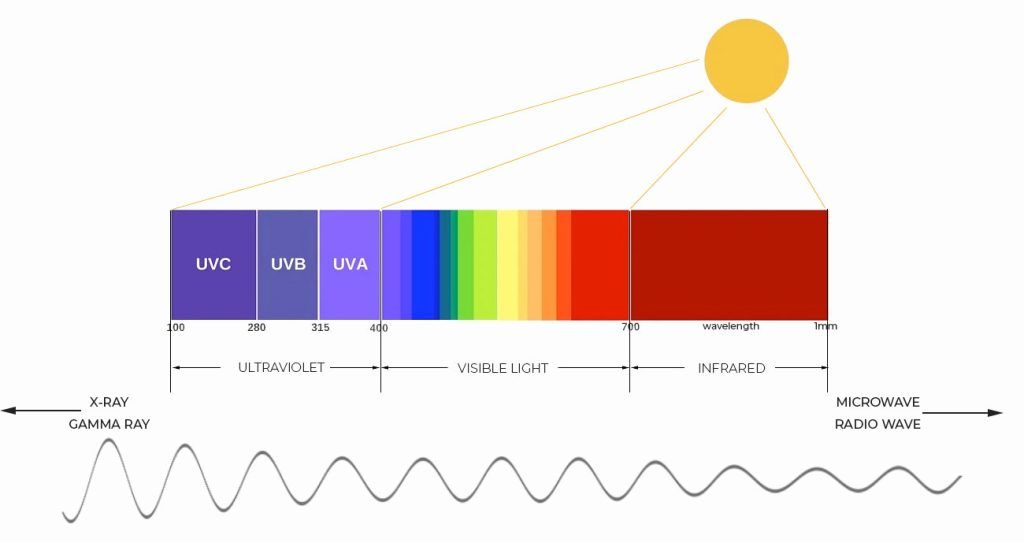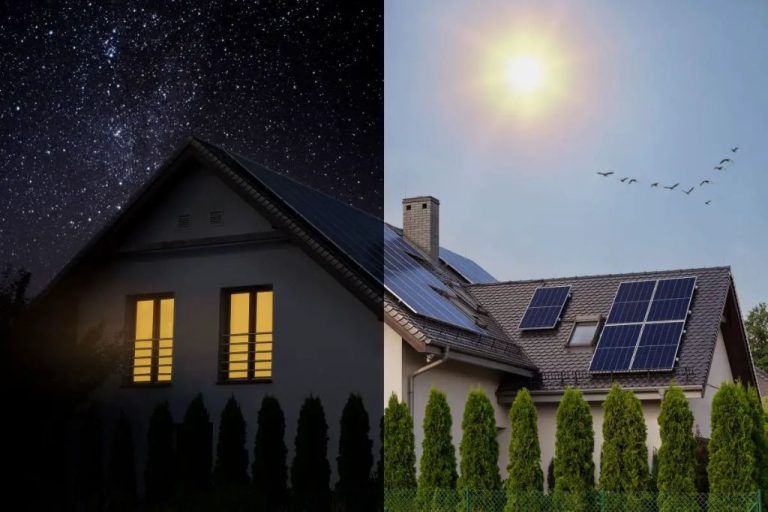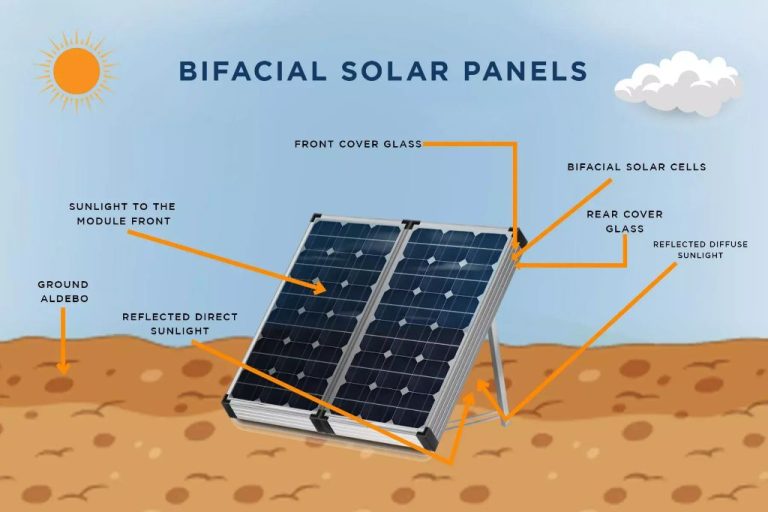What Is Solar Radiation In Short Answer?
Solar radiation refers to the electromagnetic radiation emitted by the sun. It consists of ultraviolet radiation, visible light, and infrared radiation. The sun produces energy through thermonuclear fusion reactions in its core, converting hydrogen to helium. This process emits photons, which make up the electromagnetic radiation that travels from the sun to Earth.
The spectrum of the sun’s radiation peaks in the visible light portion, which is why sunlight appears white or yellow to the human eye. However, solar radiation contains other wavelengths across the electromagnetic spectrum. About 10% of solar radiation is ultraviolet and over 40% is infrared. The amount of radiation that reaches the Earth’s atmosphere is determined by the sun’s elevation and depends on factors like time of day, season, and latitude.
Types
Solar radiation can be categorized into three main types based on wavelength:
-
Ultraviolet (UV) – This is the highest energy and shortest wavelength radiation from the sun. It is divided into UV-A, UV-B, and UV-C. UV-A and some UV-B reach the Earth’s surface. Too much exposure can cause sunburn and skin cancer, but UV radiation also stimulates vitamin D production.
-
Visible light – This is the part of the solar spectrum that is visible to the human eye. It allows us to see color and is important for plant photosynthesis. Visible light ranges from violet with the shortest wavelengths to red with the longest wavelengths.
-
Infrared – This lower energy, longer wavelength radiation is invisible to our eyes but can be felt as heat. Infrared heats up the atmosphere, land, and oceans, driving weather patterns and climate.

So in summary, solar radiation spans a wide spectrum from high-energy UV to visible light to infrared heat energy.
Measurement
Solar radiation is measured using specialized instruments called pyranometers and radiometers. Pyranometers measure solar irradiance, which is the rate at which solar energy hits a surface. They do this by detecting the heating effect of solar radiation on a blackened surface inside the instrument. Radiometers measure solar irradiance by converting light energy into heat, which is then converted into an electrical signal that can be recorded and analyzed.
Both pyranometers and radiometers typically measure radiation across the full solar spectrum, from ultraviolet to infrared wavelengths. However, some instruments are designed to measure specific wavelength bands. The readings from these devices are expressed in watts per square meter (W/m2). By collecting solar radiation measurements over time, scientists can study variations in solar intensity and the effects of the atmosphere and weather on incoming solar energy.
Effects of Solar Radiation
Solar radiation has a number of significant effects on the Earth and its systems.
The most direct effect of solar radiation is heating. As sunlight reaches Earth’s surface, it warms the land, oceans, and atmosphere. This solar heating drives convection in the atmosphere and oceans, influencing weather and climate patterns around the world. Sunlight is the primary source of energy for the climate system.
Solar radiation also provides the energy that enables plant growth via photosynthesis. Plants use sunlight to convert carbon dioxide and water into carbohydrates and oxygen. This process forms the foundation of almost all life on Earth.
By heating different parts of the planet unevenly, solar energy also drives global circulation patterns in the oceans and atmosphere that distribute heat from the equator toward the poles. These circulation patterns influence weather, precipitation, and the jet stream.
Variations in solar irradiance have further effects on Earth’s climate over years, decades, and centuries. Changes in the amount of incoming sunlight due to solar cycles and activity can impact global temperature patterns and other climate variables.
Human society and technology are also strongly dependent on solar radiation. Renewable energy sources like solar panels, solar water heating, and passive solar building designs all harness the Sun’s energy.
Variability
Solar radiation varies significantly based on location, time of day, and seasons. The amount of solar radiation reaching the Earth’s surface depends on the angle of the sun. At noon when the sun is directly overhead, the incoming solar radiation is more concentrated and intense. In the morning and evening when the sun is lower in the sky, the incoming sunlight is less intense as it spreads out over a larger area. Solar intensity also varies greatly by latitude, with the tropics receiving much more year-round solar radiation than the polar regions. The amount of solar radiation fluctuates throughout the year as well. During summer, locations receive more direct sunlight with longer days and a higher sun angle than winter. The seasons are opposite in the northern and southern hemispheres due to the tilt of the Earth’s axis. Overall, equatorial and tropical regions tend to experience less seasonal variability in solar radiation, while higher latitudes have larger differences between summer and winter sunlight.
Applications
Solar radiation has many important practical applications in fields like renewable energy, agriculture, and climate science. Some of the key applications of solar radiation include:
-
Solar power generation – Solar radiation is harnessed using photovoltaic panels to generate electricity. Solar power is one of the most rapidly growing renewable energy sources around the world.
-
Solar heating – Solar thermal collectors are used to harness solar radiation to heat water and spaces in homes and buildings.
-
Photosynthesis – Plants use solar radiation for photosynthesis, the process by which they convert sunlight into chemical energy.
-
Weather and climate monitoring – Measurements of incoming solar radiation at the Earth’s surface and top of the atmosphere provide insights into weather and climate patterns.
-
Agriculture and horticulture – The amount of solar radiation affects plant growth and crop yields. Greenhouses use solar radiation to create optimal growing conditions.
-
Solar cooking – Solar cookers use solar radiation as a means of cooking food without consuming traditional fuel sources.
Research continues into other applications of solar radiation like solar-powered vehicles, using sunlight for chemical processes, and more efficient solar energy harvesting.
Health Effects
Solar radiation, especially ultraviolet (UV) radiation, can have significant impacts on human health. Exposure to UV radiation is the primary cause of sunburn, premature skin aging, and skin cancer. UV radiation is classified into UVA, UVB, and UVC rays based on wavelength. UVB rays in particular damage DNA in skin cells and are responsible for most sunburns and skin cancers.
Sunburn is an acute reaction that manifests as reddening and inflammation of the skin within hours after overexposure to UV radiation. It results when the amount of UV radiation exceeds the protective capacity of the skin’s melanin pigment. Sunburn damage can lead to peeling skin in subsequent days as the body repairs skin cell DNA.
Chronic UV exposure leads to photoaging, characterized by wrinkles, blotchiness, and discoloration on sun-exposed skin. This occurs as UV radiation degrades collagen and elastin fibers in the dermis layer of skin. Photoaging is accelerated compared to natural chronological aging of skin.
The most serious health effect of solar UV radiation is skin cancer, including melanoma and non-melanoma cancers such as basal cell carcinoma and squamous cell carcinoma. UV radiation causes DNA mutations that allow skin cells to grow out of control into cancerous tumors. In particular, blistering childhood sunburns increase one’s lifetime risk of melanoma. Regular sunscreen use and avoidance of excessive midday sun exposure are key prevention strategies.
Protection
Exposure to solar radiation, especially ultraviolet radiation, can be harmful in high doses. Here are some ways to protect yourself:
-
Use sunscreen – Apply broad spectrum sunscreen with an SPF of 30 or higher to exposed skin at least 15 minutes before going outside. Reapply every 2 hours and after swimming or sweating.
-
Wear protective clothing – Cover up with tightly-woven, loose fitting clothing, a wide-brimmed hat, and UV-blocking sunglasses when outside.
-
Seek shade – Stay in the shade as much as possible, especially during peak sunlight hours between 10am and 4pm.
-
Avoid tanning beds – Tanning beds emit intense UV radiation and significantly increase skin cancer risk.
-
Watch the UV index – Pay attention to your local UV index forecast and limit time outside when it’s very high (8-10+).
Taking simple precautions can greatly reduce excessive UV exposure from the sun and lower the chances of sunburn, skin damage, and skin cancer.
Historical Research
The study of solar radiation dates back to the 1800s when scientists first began using instruments like pyranometers and pyrheliometers to quantify sunlight. Some key developments include:
1838 – John Herschel invents the actinometer to measure heating power of radiation.
1843 – John Frederick Daniell invents the first reliable pyrometer to measure radiant heat.
1853 – Charles Piazzi Smyth develops a sunshine recorder to chart sunshine over time.
1860s – Extensive solar radiation measurements are collected by weather stations around the world.
1893 – Samuel Pierpont Langley invents the bolometer, a sensitive instrument for measuring heat radiation.
1901- Charles Greeley Abbot develops the first accurate standardized pyrheliometer.
1920s – Solar constant measurement expeditions are conducted by Abbot and others.
1954 – The first successful pyranometer with internal thermoelectric sensor is developed.
1960s – Satellite measurement of solar irradiance begins.
Today solar irradiance is monitored through a global network of ground stations and multiple earth-orbiting satellites to collect precise data on variability over time.
Conclusion
In summary, solar radiation is the radiant energy emitted by the sun in the form of electromagnetic waves. There are different types of solar radiation based on wavelength, including visible light, ultraviolet radiation, and infrared radiation. Solar radiation is measured using instruments like pyranometers and pyrheliometers. When solar radiation reaches the Earth’s atmosphere and surface, it provides the energy that powers many Earth systems and life processes. However, solar radiation can also have negative impacts in excess, causing sunburn, skin cancer, and eye damage in humans as well as weather fluctuations on Earth. Understanding solar radiation is crucial as we rely on the sun’s energy for life, but must also protect against its potential harms through methods like sunscreen, shade, and eye protection. With continued research and measurement of solar radiation, scientists can better predict its variables and effects.






